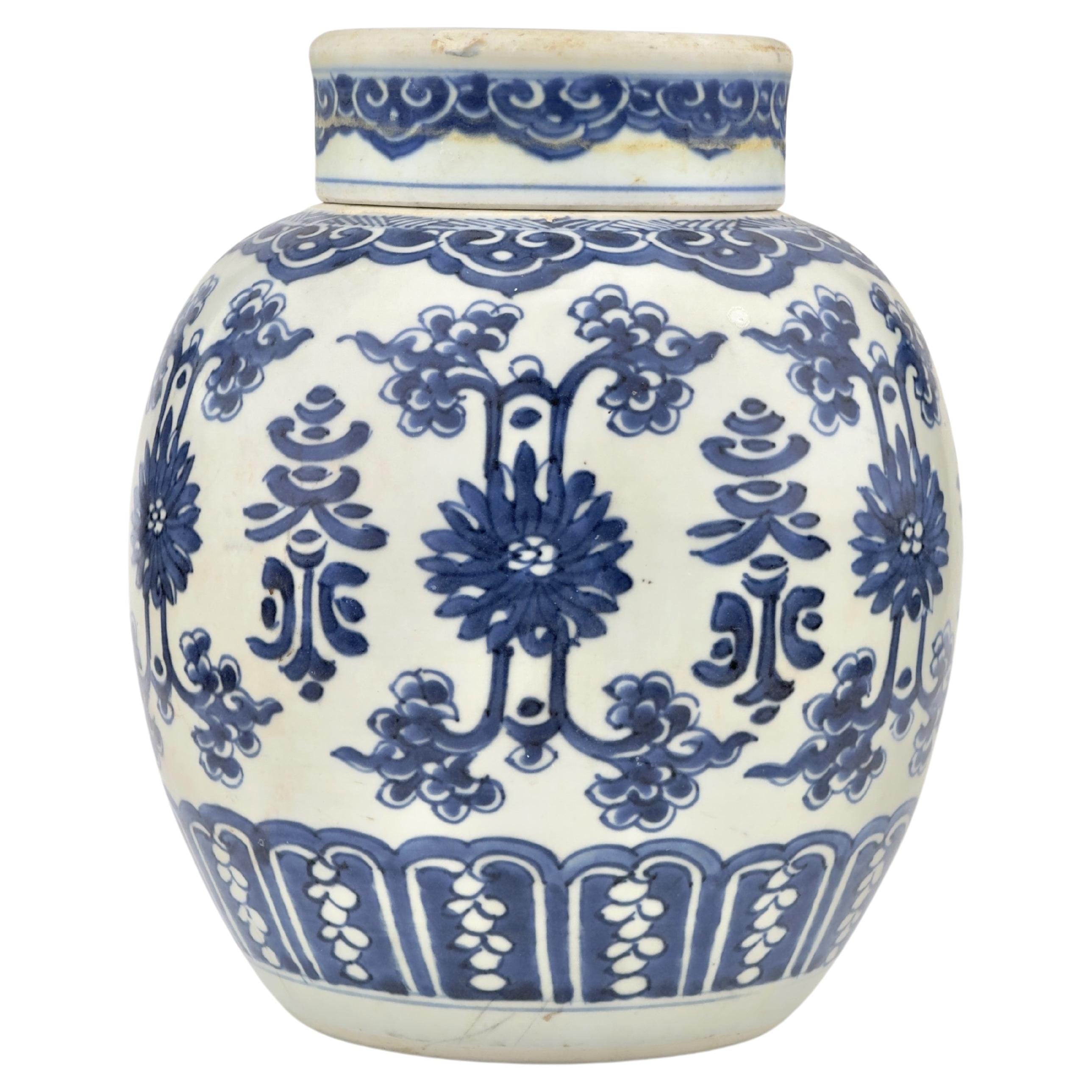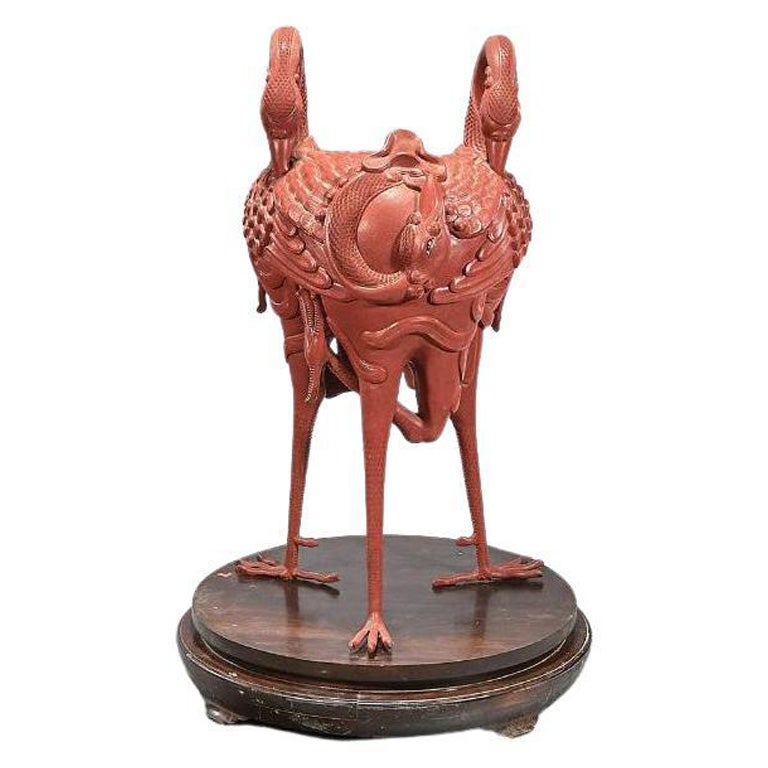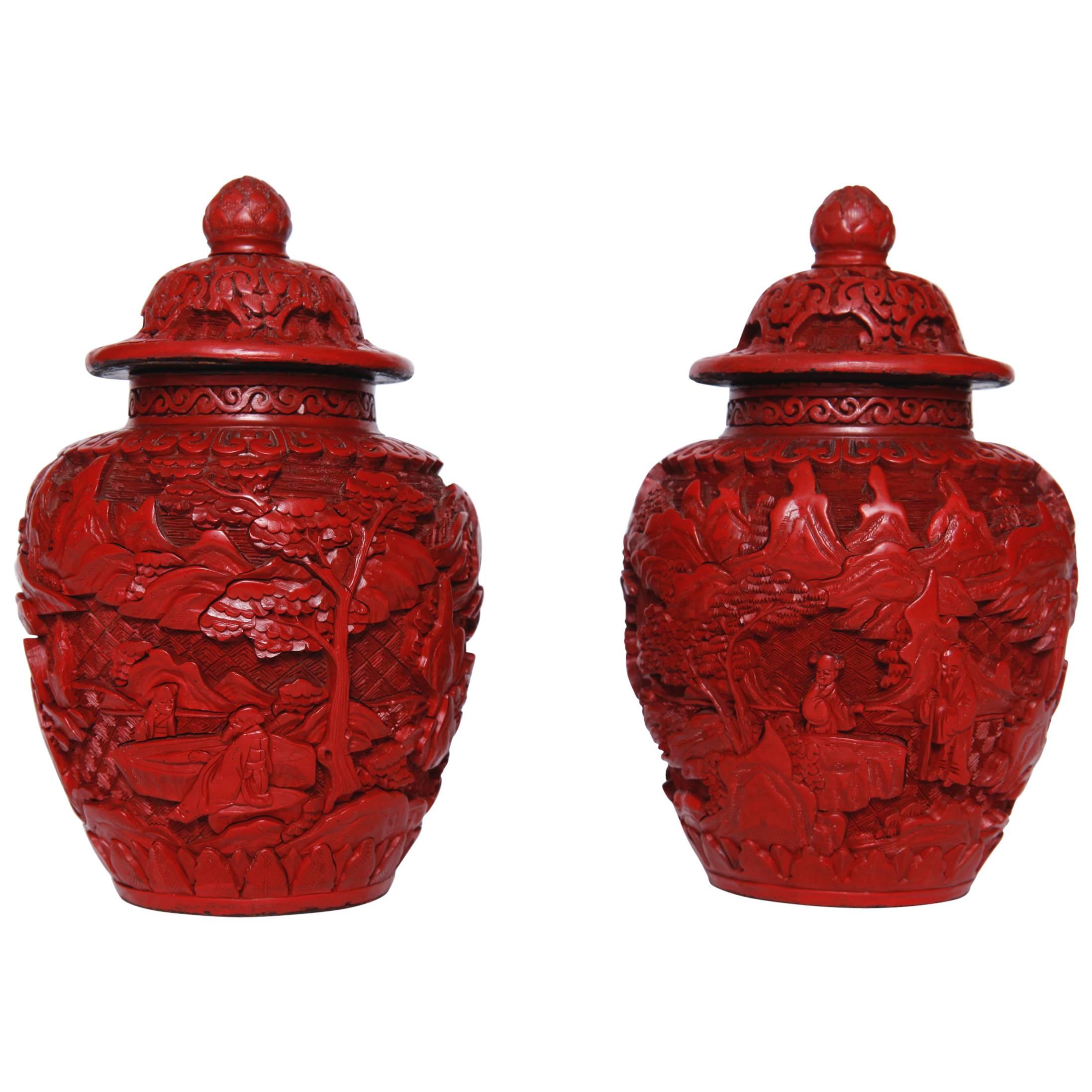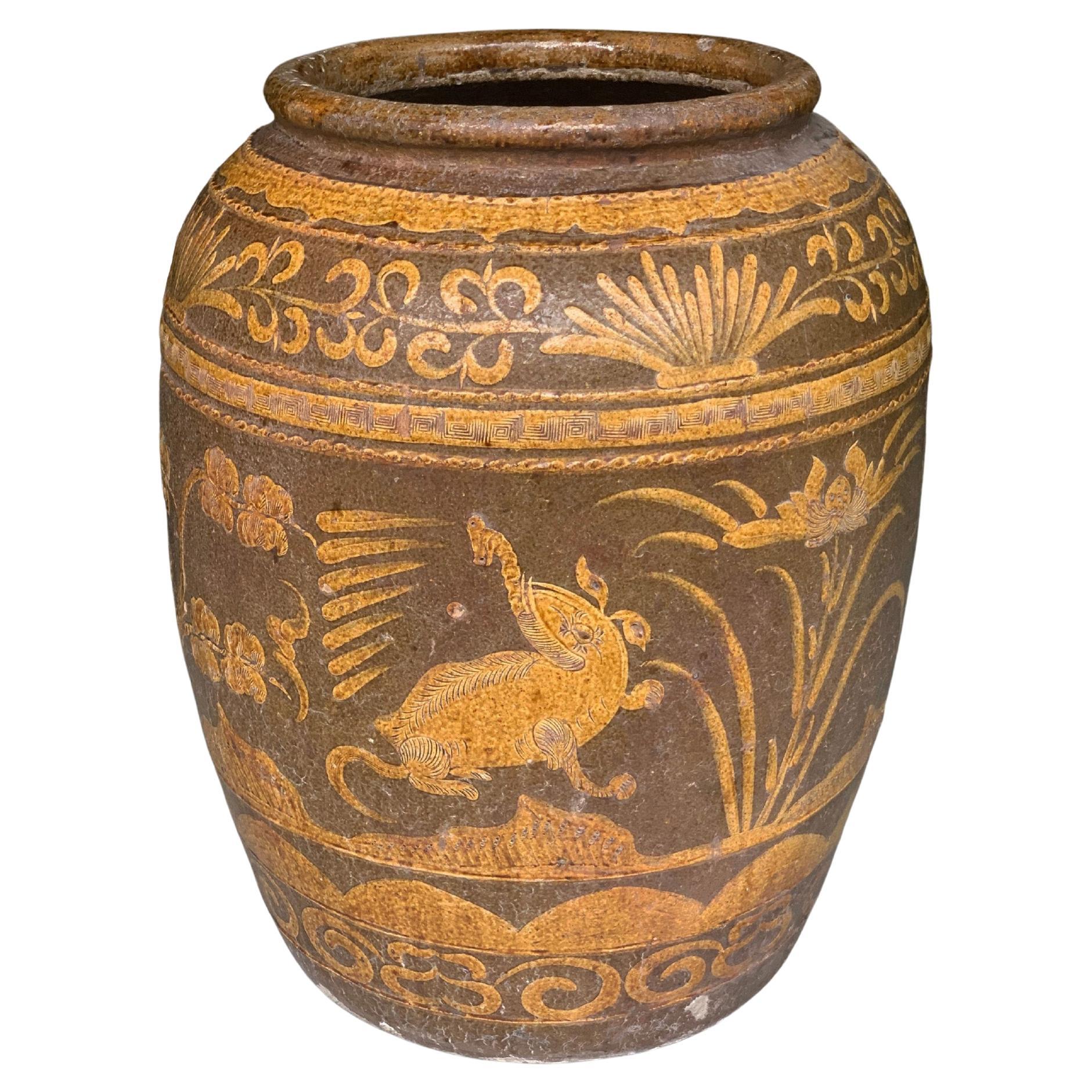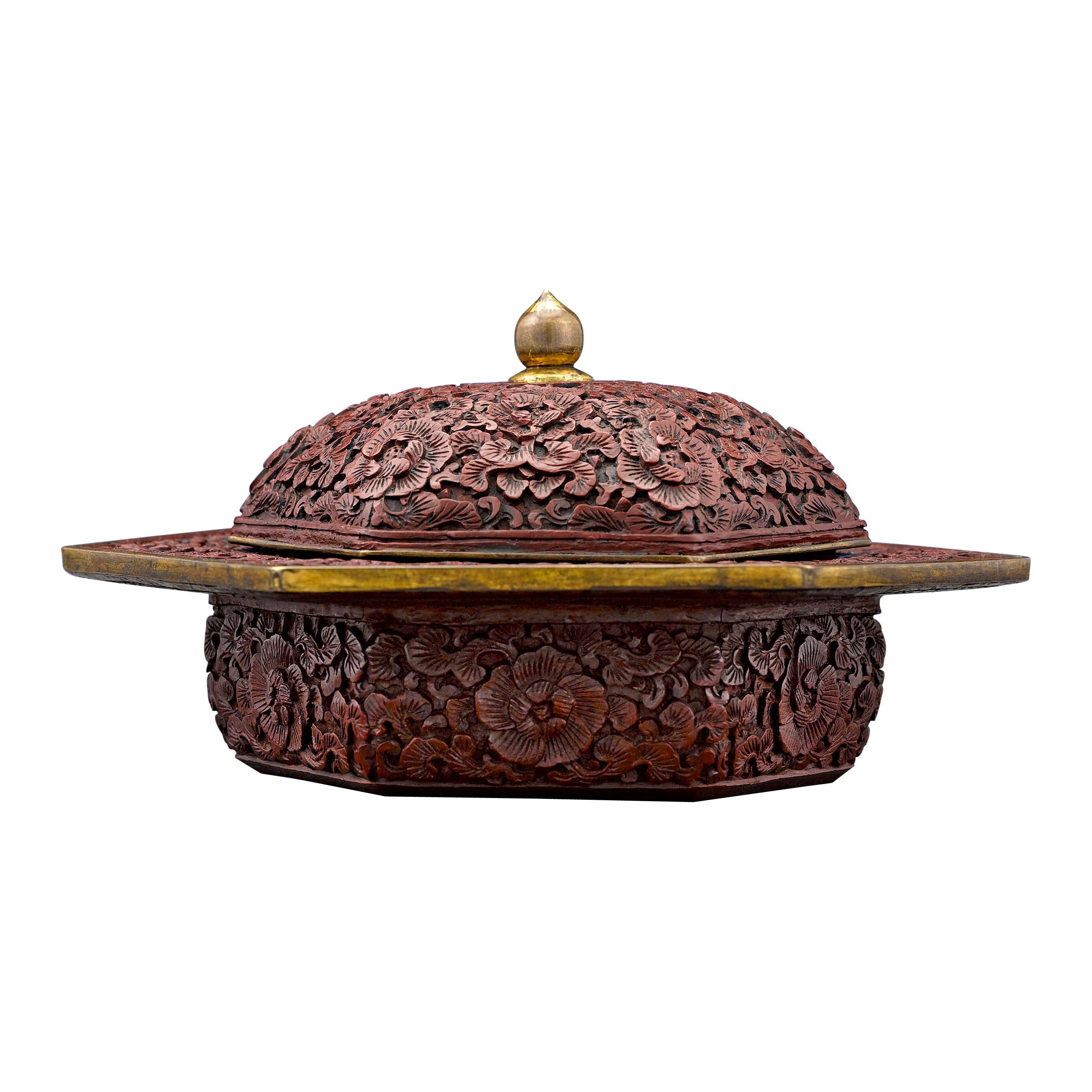Items Similar to Post Qing Dynasty Cinnabar Ginger Jar & Stand
Want more images or videos?
Request additional images or videos from the seller
1 of 17
Post Qing Dynasty Cinnabar Ginger Jar & Stand
About the Item
Post Qing Dynasty Cinnabar ginger jar & stand
Exquisite high relief carved continuous landscape motif, complete with hardwood stand. Unmarked.
The ginger jar alone measures 7-inches high x 6-inches diameter x 3.5-inch diameter base
On the stand measures 8-inches high x 4.5-inch diameter.
- Dimensions:Height: 8 in (20.32 cm)Diameter: 4.5 in (11.43 cm)
- Style:Chinese Export (Of the Period)
- Materials and Techniques:
- Place of Origin:
- Period:
- Date of Manufacture:1920s
- Condition:Wear consistent with age and use.
- Seller Location:West Palm Beach, FL
- Reference Number:
About the Seller
5.0
Platinum Seller
These expertly vetted sellers are 1stDibs' most experienced sellers and are rated highest by our customers.
Established in 1996
1stDibs seller since 2017
1,088 sales on 1stDibs
Typical response time: 1 hour
- ShippingRetrieving quote...Ships From: West Palm Beach, FL
- Return PolicyA return for this item may be initiated within 2 days of delivery.
More From This SellerView All
- 19th Century Chinese Export Oval Cinnabar BoxLocated in West Palm Beach, FL19th Century Chinese Export Oval Cinnabar Box This 19th Century Chinese Export Oval Cinnabar Box is a testament to exceptional craftsmanship and artistr...Category
Antique 19th Century Chinese Chinese Export Lacquer
MaterialsMetal
- 19th C. Chinese Figural Carved Wood Lacquer Scholars/ Offering / Opium StandLocated in West Palm Beach, FL19th C. Chinese Figural Carved Wood Lacquer Scholars/ Offering / Opium Stand Chinese 19th Century A truly unique and remarkable piece from 19th-century China, this figural carved w...Category
Antique Late 19th Century Chinese Chinese Export Lacquer
MaterialsShell, Wood, Lacquer
- Pair of Chinese Modernist Red Cloisonné Ginger Jars and Stands, Circa 1960sLocated in West Palm Beach, FLPair of Chinese Modernist Red Cloisonné Ginger Jars and Stands, Circa 1960s China, 20th Century A stunning pair of Chinese Modernist red cloi...Category
20th Century Chinese Chinese Export Metalwork
MaterialsBrass, Copper
- Pair of Chinese Export Famille Verte Jardinières 100 Antique Pattern, Late QingLocated in West Palm Beach, FLPair of Chinese Export Famille Verte Jardinières 100 Antique Pattern, Late Qing Period Circa 1900 Marked A magnificent pair of Chinese Ex...Category
Early 20th Century Chinese Chinese Export Ceramics
MaterialsPorcelain
- Chinese Blue and White Spittoon, Qing Dynasty, Kangxi PeriodLocated in West Palm Beach, FLChinese Blue and White Spittoon, Qing Dynasty, Kangxi Period China, Circa 1700 An exquisite Chinese Blue and White Spittoon from the Qing Dynasty's Kangxi Period, showcasing the fin...Category
Antique 18th Century Chinese Chinese Export Ceramics
MaterialsPorcelain
- Pair of Chinese Red Cloisonné Zodiac Vases, with StandsLocated in West Palm Beach, FLPair of Chinese red cloisonné zodiac vases, with stands, each one with gilt brass phoenix bird ring handles, with 'cracked ice' and floating animal medalli...Category
20th Century Chinese Chinese Export Metalwork
MaterialsBrass, Enamel
You May Also Like
- Chinese Porcelain Ginger Jar, Qing Dynasty Yongzheng PeriodLocated in seoul, KRA Chinese porcelain ginger jar, Yongzheng period, painted in underglaze blue with lotus blooms and shou(水, meaning 'Water') characters beneath a ruyi border, underglaze blue double r...Category
Antique 1720s Chinese Chinese Export Jars
MaterialsCeramic, Porcelain
- Chinese Carved Cinnabar PlanterLocated in Cypress, CAUnique Chinese beautifully carved cinnabar planter with three cranes forming the planter, second half of the 20th century.Category
Late 20th Century Chinese Planters, Cachepots and Jardinières
MaterialsLacquer
- Pair of Chinese Cinnabar Covered Ginger JarsLocated in New York, NYPair of Chinese cinnabar covered ginger jars decorated with carved figural landscapes Late Qing dynasty Measures: H 8 in. (20.3 cm).Category
Antique 19th Century Chinese Jars
MaterialsCrystal, Other
- Late Qing Dynasty Large Baluster Famille Rose "Hundred Antiques" JarLocated in Ottawa, OntarioA late Qing Dynasty Chinese large Baluster Famille Rose "Hundred Antiques" Jar, A multitude of decorative objects and flowers in polychrome enamels and ...Category
Antique Late 19th Century Chinese Chinese Export Vases
MaterialsPorcelain, Wood
- Qing Dynasty Hand-Painted Glazed Pickling Jar, c. 1900Located in Jimbaran, BaliThis Pickling Jar was once used to pickle eggs and features a wonderful array of hand-painted motifs which include birds, foliage and other subtle symbols and patterning. The hand-pa...Category
Antique Early 1900s Chinese Qing Ceramics
MaterialsCeramic, Paint
- Chinese Cinnabar Lacquer CuspidorLocated in New Orleans, LAThis intriguing Chinese zhadou is intricately carved of fine cinnabar lacquer. A work of exceptional artistry, this covered bowl is adorned with an intricately carved floral motif on all surfaces, including the cover and the wide rim. Also known as a cuspidor or spittoon, this rare container would have been used by members of the imperial family and scholar- officials at the court. Carved during the Kangxi period (1662-1722), this charming piece exhibits the high detail and charm associated with items from that period, making it a true treasure, Early 18th century (Kangxi dynasty) Measures: 6 ¼” wide x 3 ¼” high Cinnabar has been revered for its color all over the world. It has been found in the royal burial chambers of the Mayas, in the rituals of India, and in the ruins of ancient Greece and Rome. In China, cinnabar and gold were the two most important elements in alchemy. Mined since the Neolithic Age, cinnabar is the ore of mercury, and as such, it can be incredibly toxic, especially when mining. In fact, during the Roman Empire, miners at Spain’s Almadén mine in Spain were frequently exposed to mercury fumes, and the subsequent, often fatal, sickness was considered an occupational hazard. The most popular known use of cinnabar is in Chinese carved lacquer-ware, a technique that is believed to have originated in the Song Dynasty, in which cinnabar is ground to a powder and added to clear lacquer. As with mining, there was inherent danger of mercury poisoning for those who carved the lacquer, as mercury was also released into the air when artisans ground the pigments. Most antique cinnabar...Category
Antique 18th Century Chinese Other Lacquer
MaterialsLacquer
Recently Viewed
View AllMore Ways To Browse
Lacquered Base
Carved Posts
Asian Lacquer Carved Furniture
Ginger Jar
Ginger Jars
Chinese Export Lacquer
Qing Dynasty Lacquer
Qing Dynasty Chinese Export
Qing Dynasty Chinese Export Furniture
Dynasty Jar
Cinnabar Furniture
Antique Ginger Jar
Ginger Jar Antique
Ginger Jars Antique
Antique Ginger Jars
Jar On Stand
Chinese Ginger Jars
Asian Brown Jars
